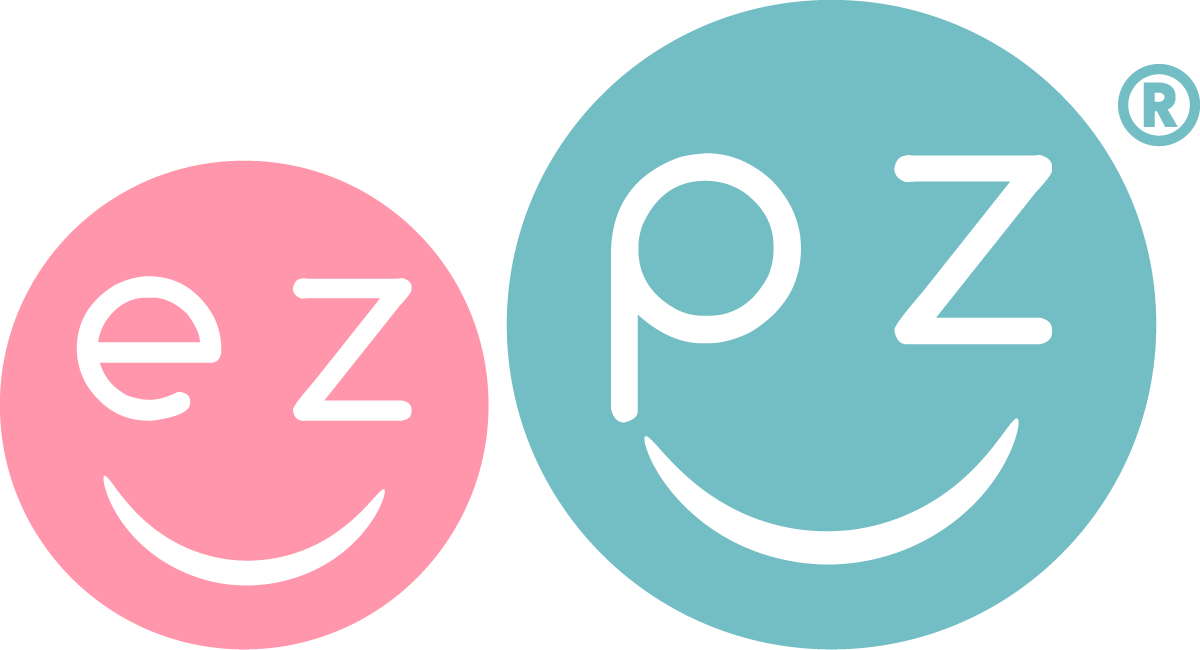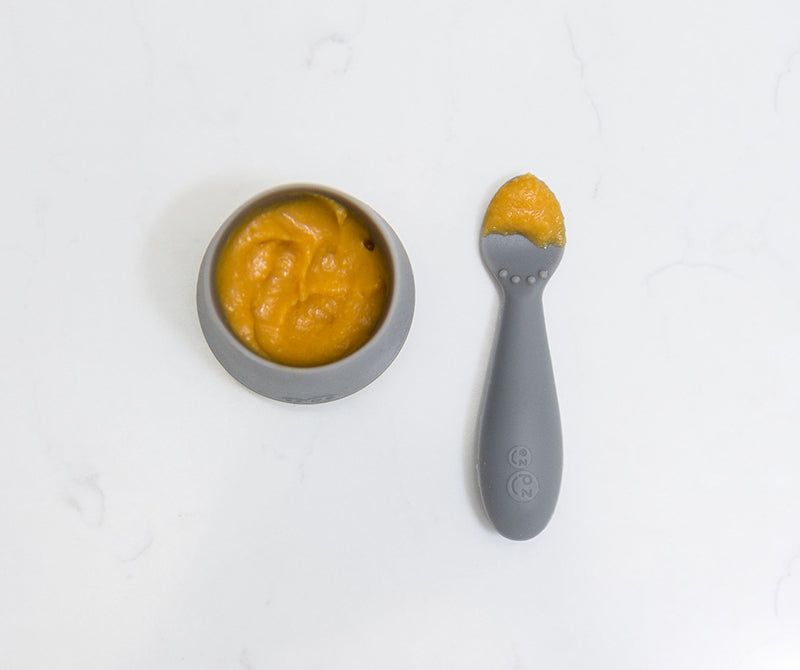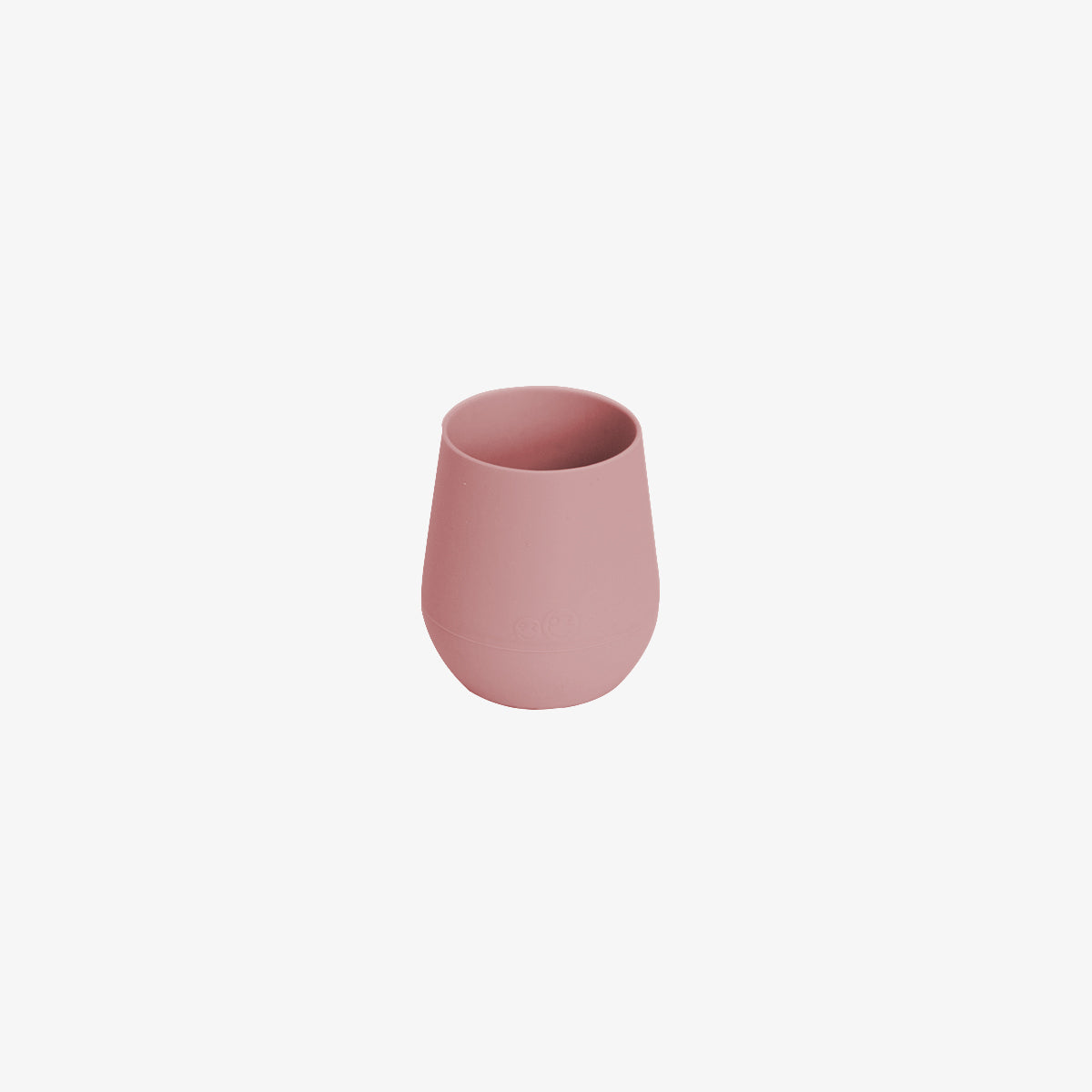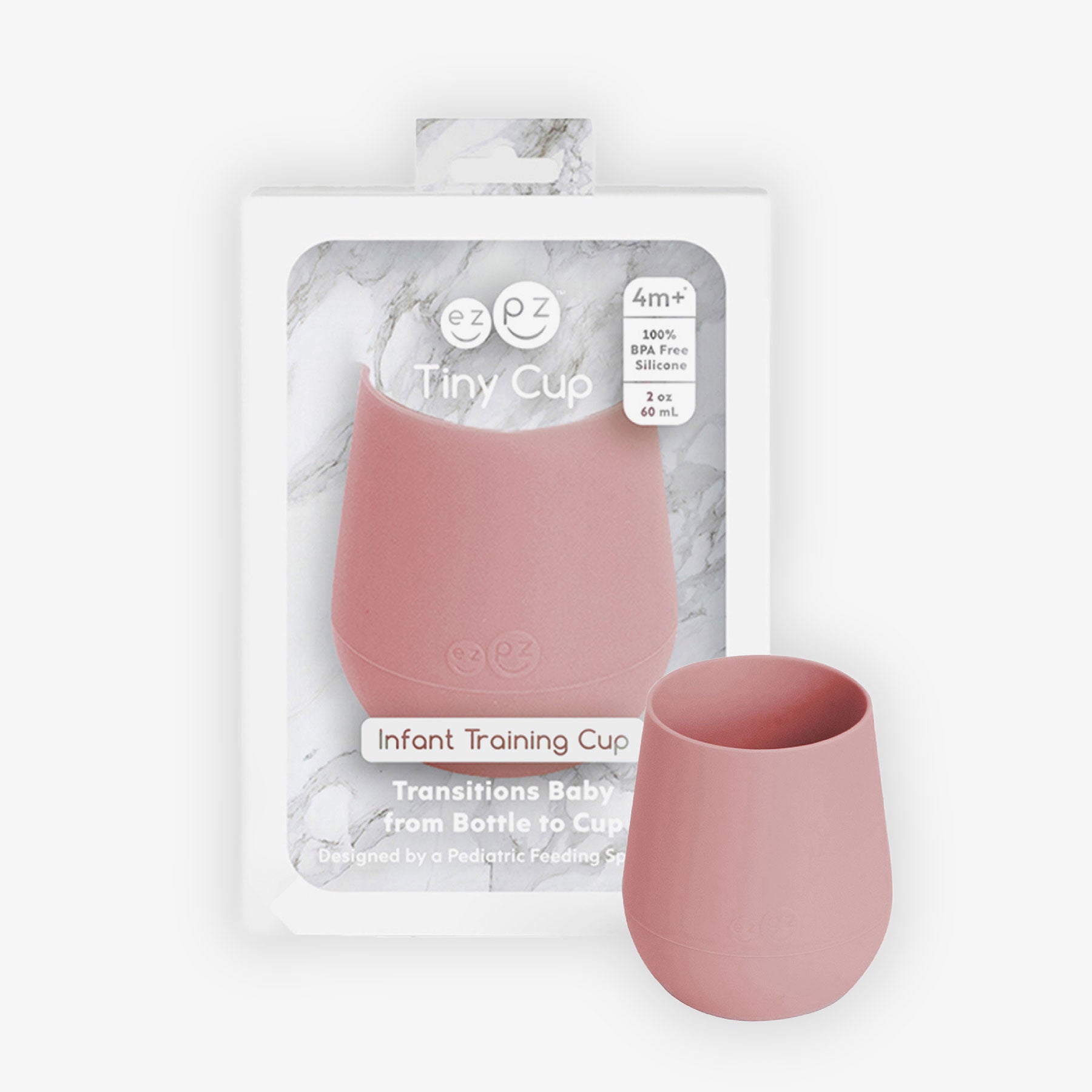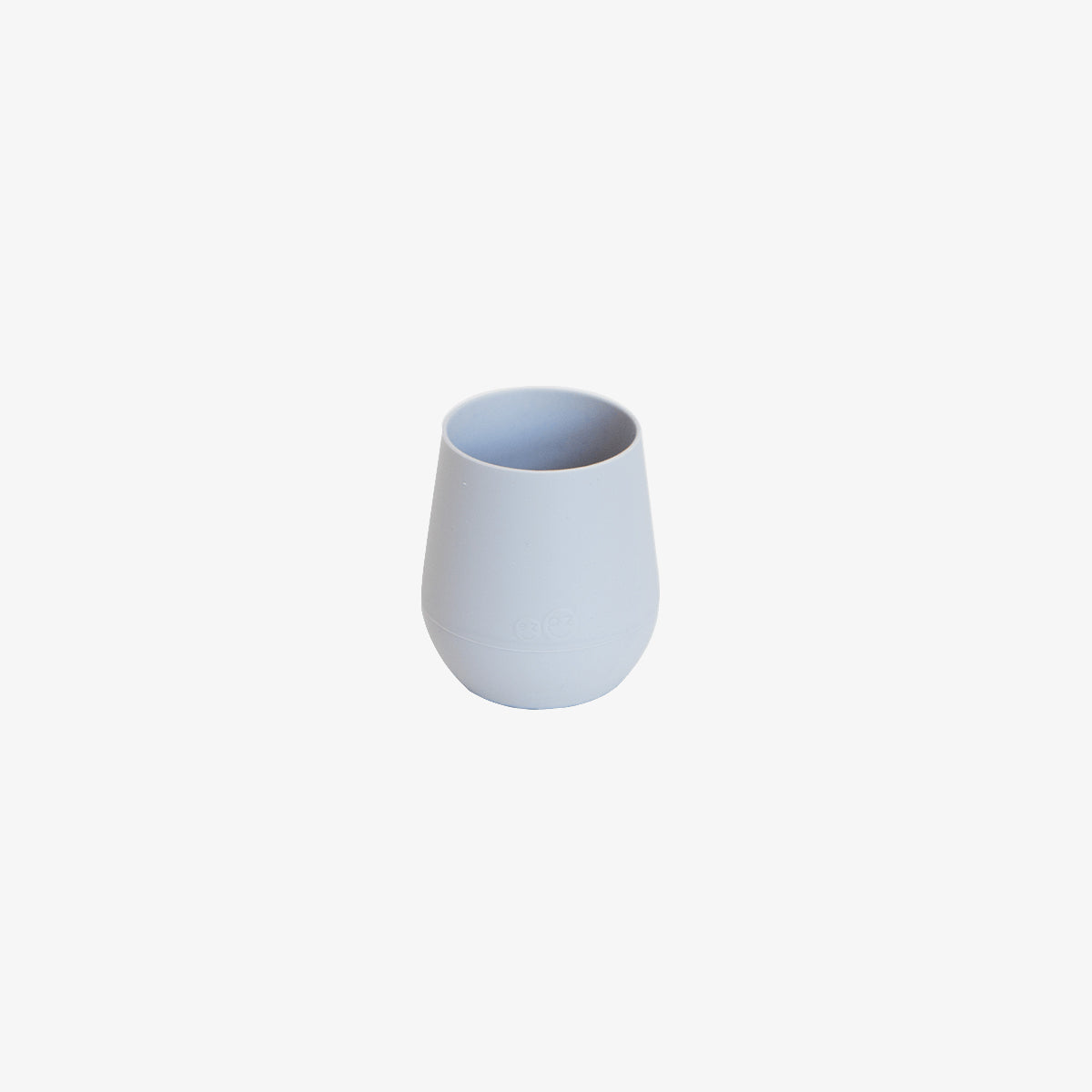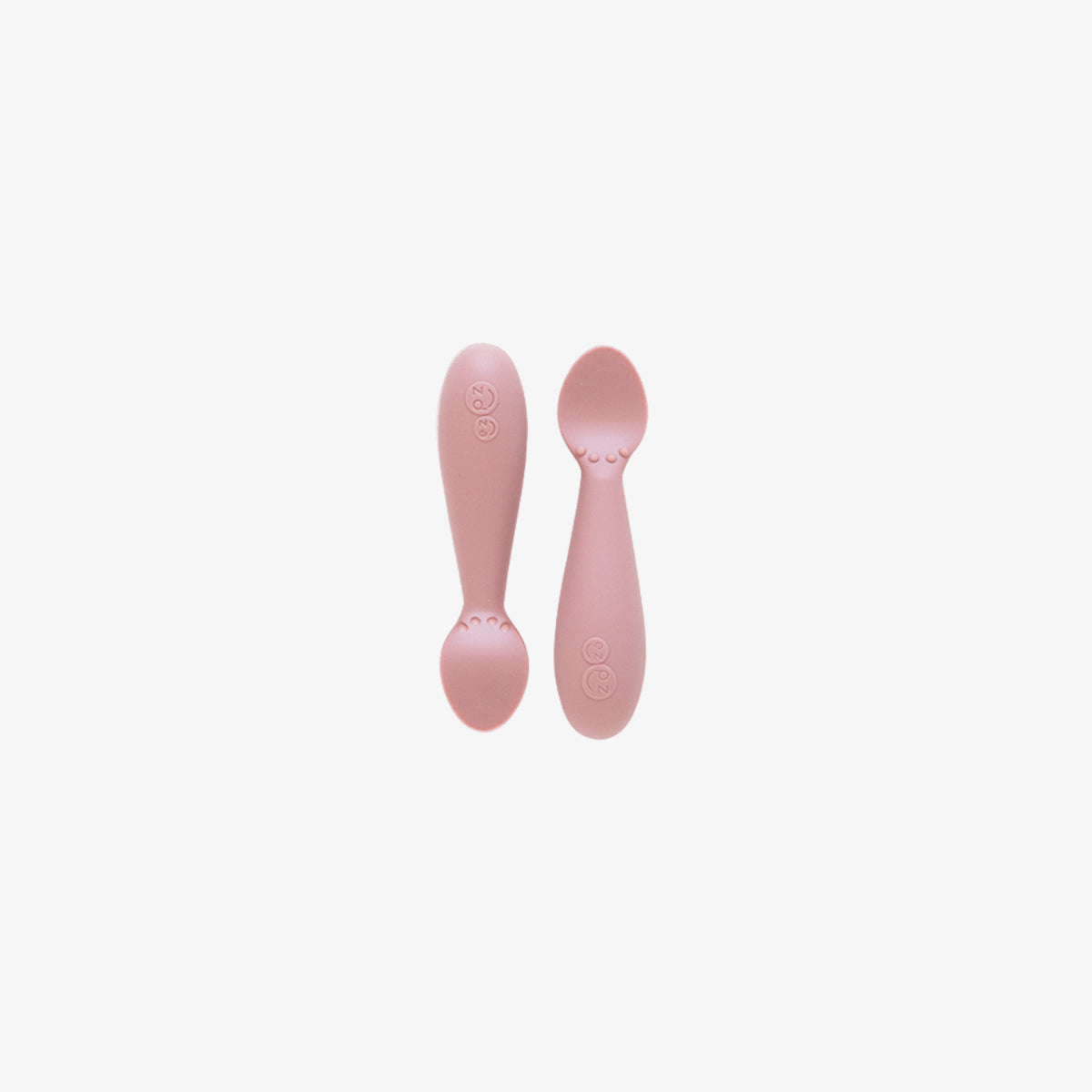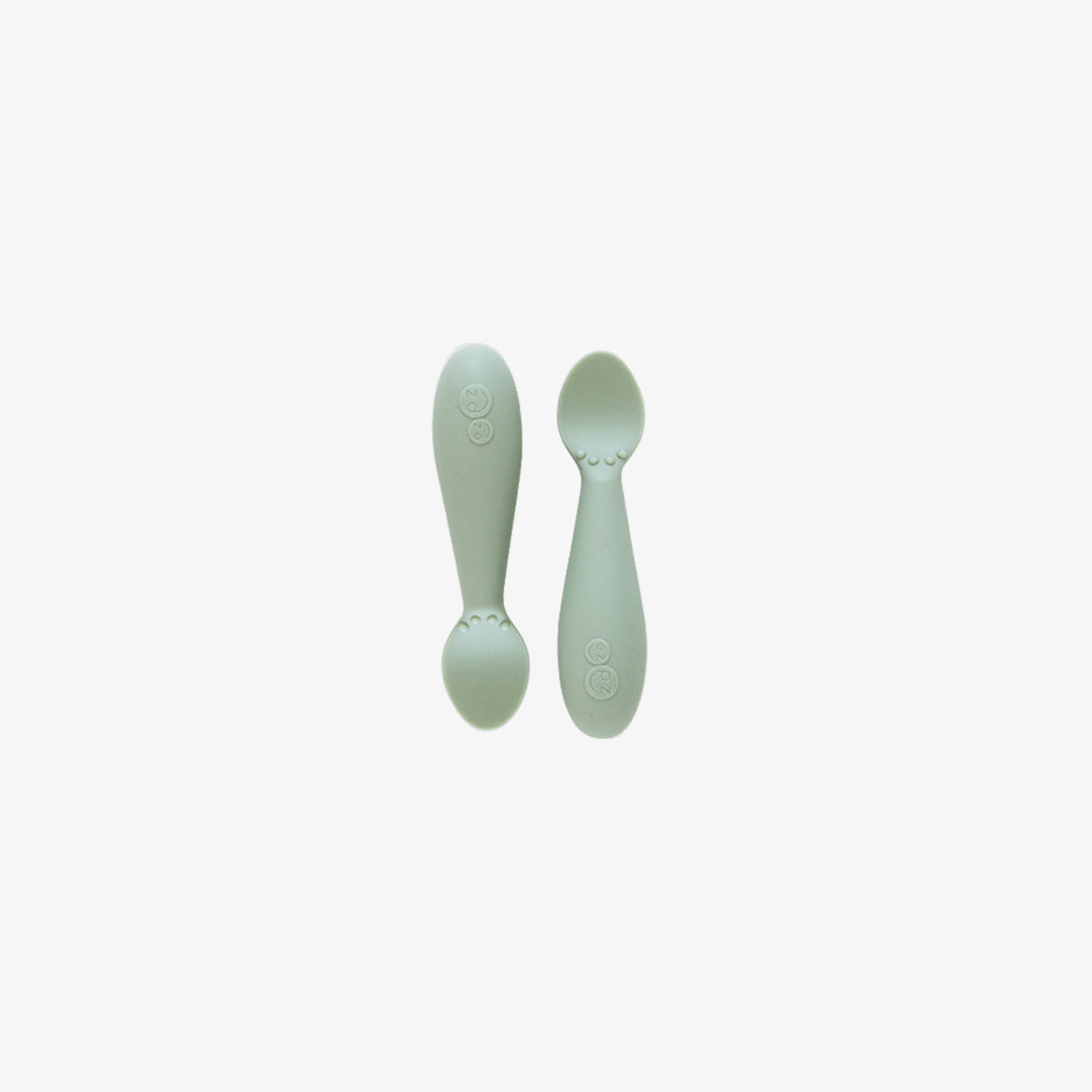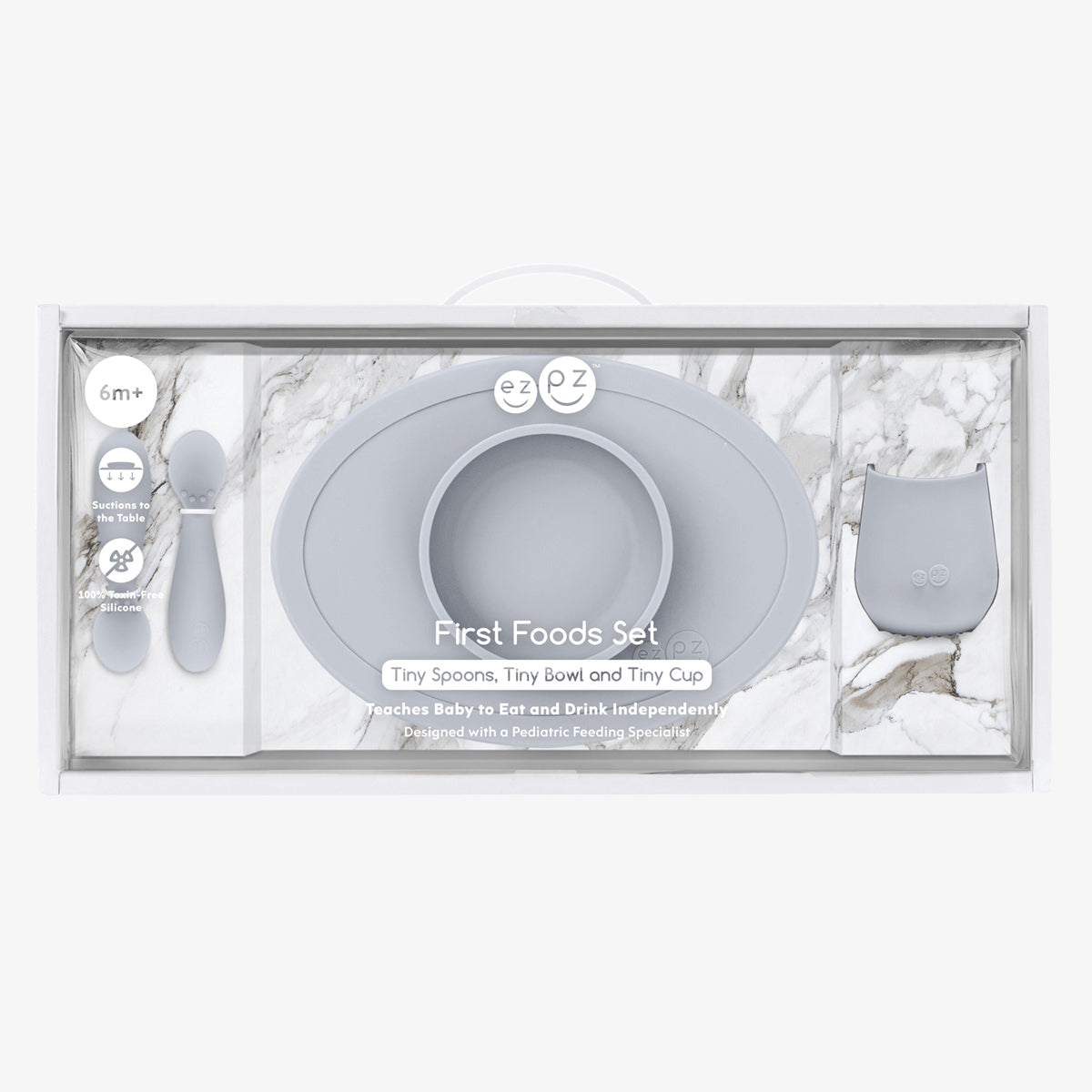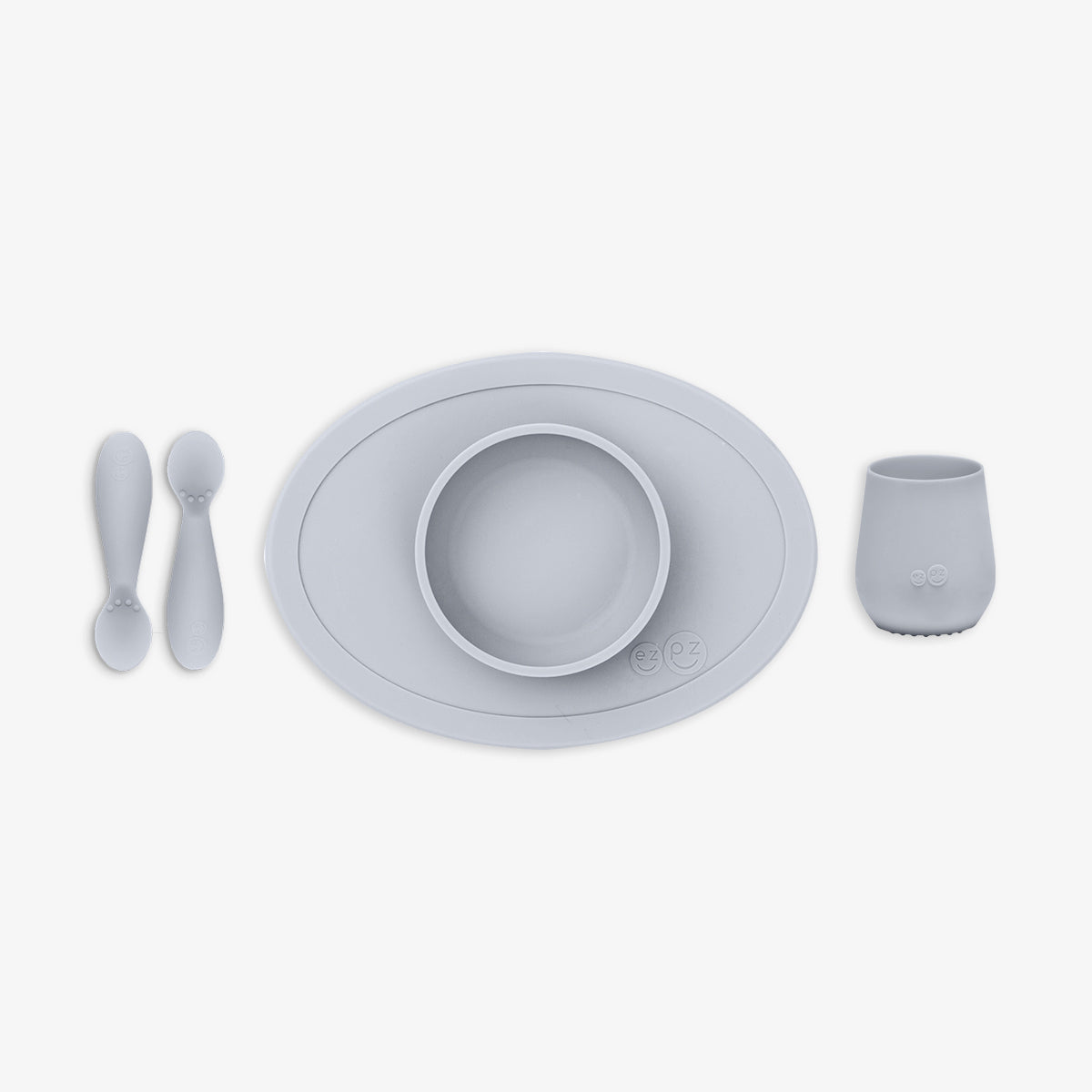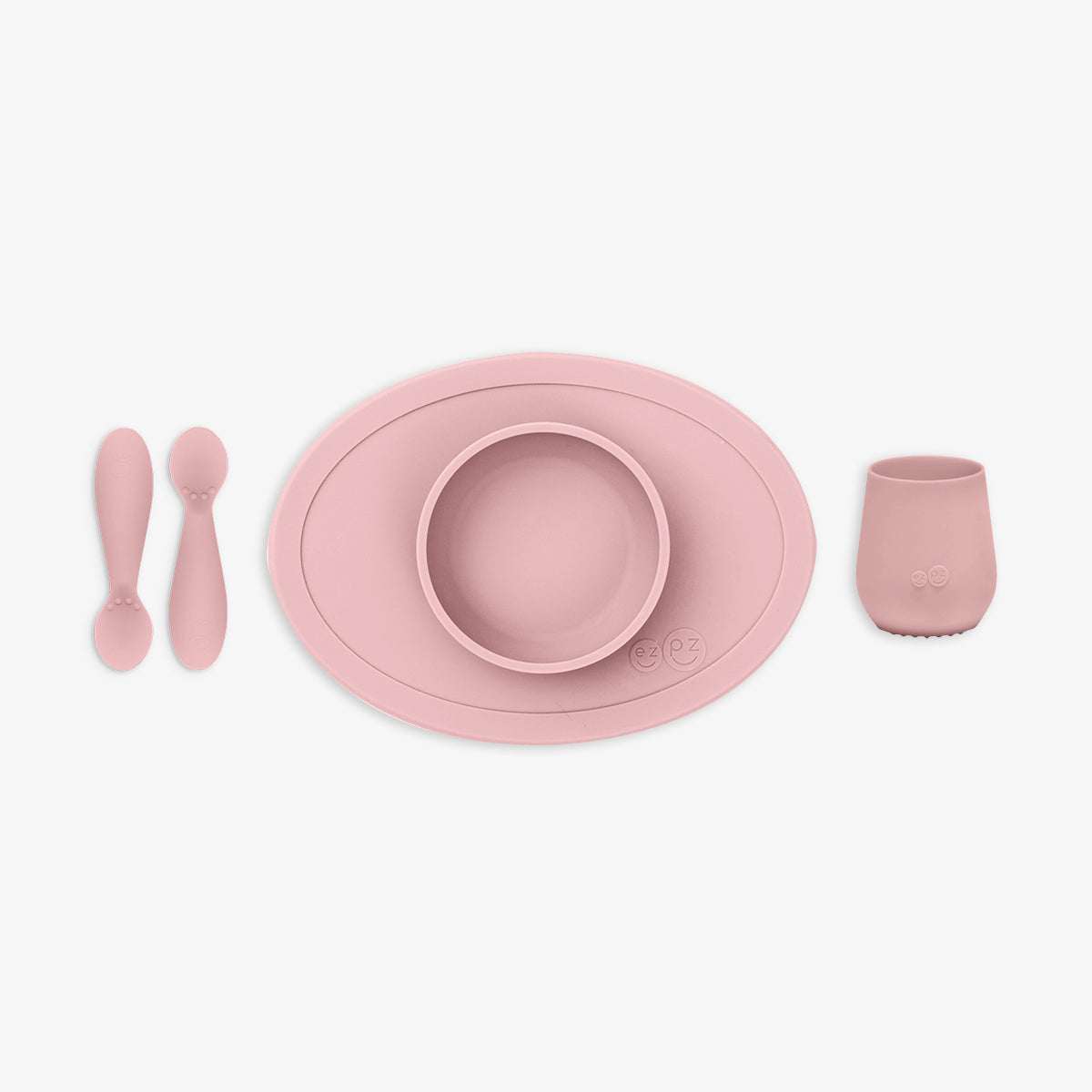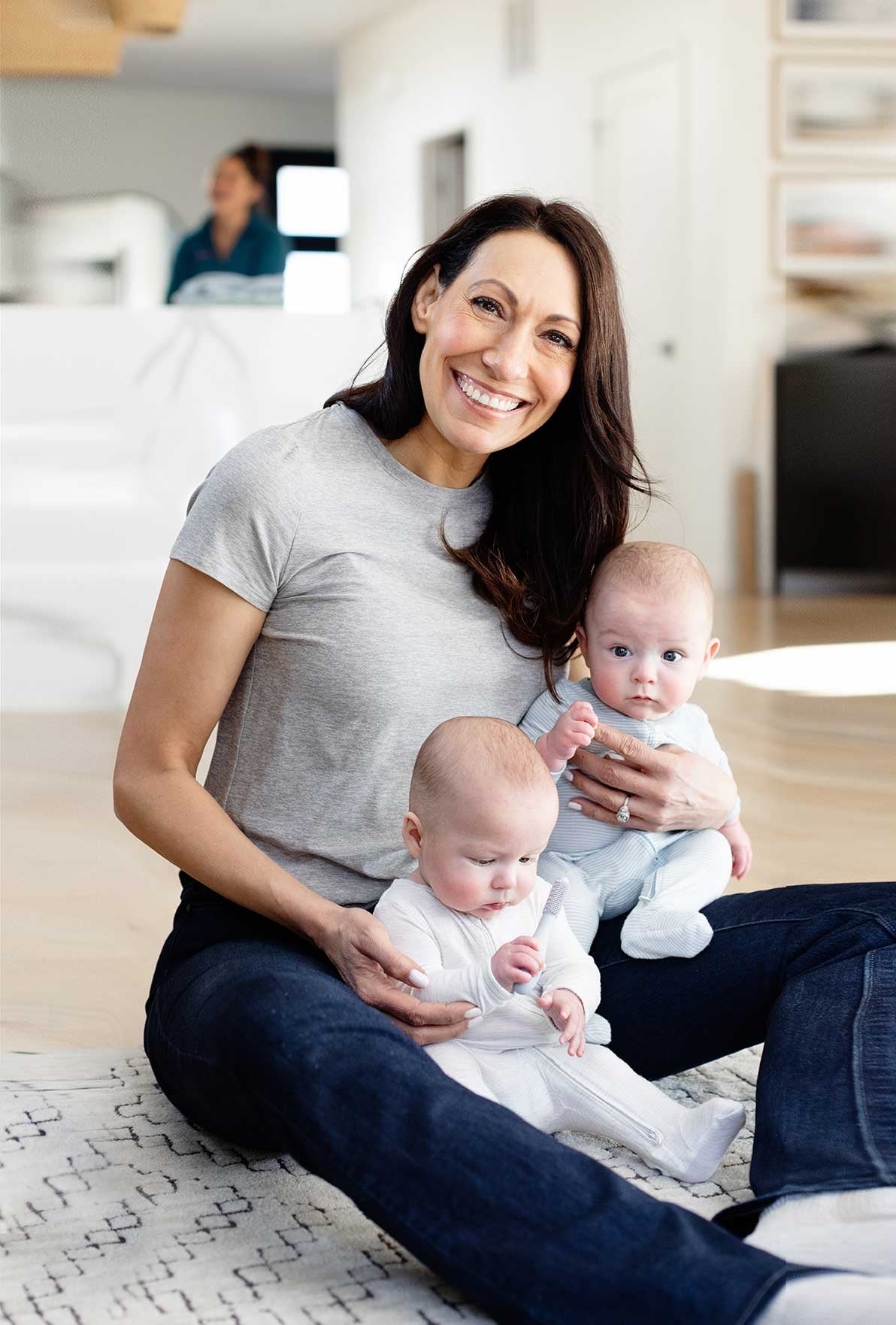When offering puree foods, it’s important to select a consistency that is safe for baby’s development. Here are three different puree textures to try with baby to assess their swallow, explore new tastes and teach them to incorporate utensils.
Thin Puree: A thin puree is a food (vegetable, fruit, protein or starch) that has been ground, pressed, blended or strained to be slightly denser than liquid. This exposes baby to a new texture change gradually, which can help them learn to transition their safe swallow of thin liquids (breast milk or formula) to a slightly thicker consistency.
-
Spoon Skills: The
ezpz Tiny Spoon is a perfect tool for dipping into a thin puree. You can offer baby a preloaded spoon of a thin puree, and they can independently put the spoon in their mouth and suckle a new taste! - Yogurt Texture Example: One example of this texture is yogurt thinned out a little with breast milk or formula. Adding formula or breast milk to the puree gives baby a consistent and familiar taste while offering a change in texture and presentation (spoon vs. bottle).
-
Open Cup Example: You can also offer baby thin puree mixtures from an open cup.
Open cup drinking is a 6-month-old developmental milestone that is easy to implement. Just give baby an ounce of liquid (held by an adult) from theezpz Tiny Cup to make first sips safe and fun.
Thick Puree: A thick puree is a texture that is dense, smooth and uniform in its consistency, and it should hold its shape in a bowl. Remember – it’s important to offer baby new textures as you expose them to the different sensory aspects of foods.
-
Spoon Skills: The ezpz Tiny Spoon can help baby learn the developmental skill of
baby-led dipping (which is a developmental milestone that matures around 9 months of age). -
Black Beans Texture Example: Blend a can of black
beans (and its dark broth) into a thick paste. Offer baby the paste in a bowl with a spoon or spread on soft crackers. - Open Cup Example: Baby should also try drinking a thick puree from an open cup. You can put applesauce (slightly thicker than a traditional thin puree) into an open cup and have baby learn how to drink and swallow the weighted consistency. It also has a grainy texture that can help prepare their sensory system for the next transition (a lumpy puree).
Lumpy Puree: Babies need to be exposed to lumpy purees to help them transition to food textures that fall apart in their mouth. You may see gagging at first, but remain calm and confident as your baby learns more about this novel texture. Start off with soft lumps, like fork-mashed sweet potato, and then work up to firmer lumps like cottage cheese.
- Spoon Skills: Baby-led scooping matures around 11-18 months of age. Have your little one practice their spoon scooping skills with these thicker and more challenging textures!
- Chickpea Texture Example: Take cooked soft chickpeas and mash them into a moist chunky puree with a fork. Serve with a spoon.
-
Cottage Cheese Texture Example: This is a messy finger food but also a great way for baby to learn the sensory properties of a lumpy
puree with both their hands and a spoon.
Offering multiple puree textures gives baby an opportunity to practice tongue movements needed for safe feeding, drinking and speech. Serving a variety of consistencies makes it less likely for baby to reject new textures during the toddler years. Score!
What texture of puree does your baby enjoy most? We are curious about your answers, so be sure to tag us with your pictures! #ezpzfun #ezpz
